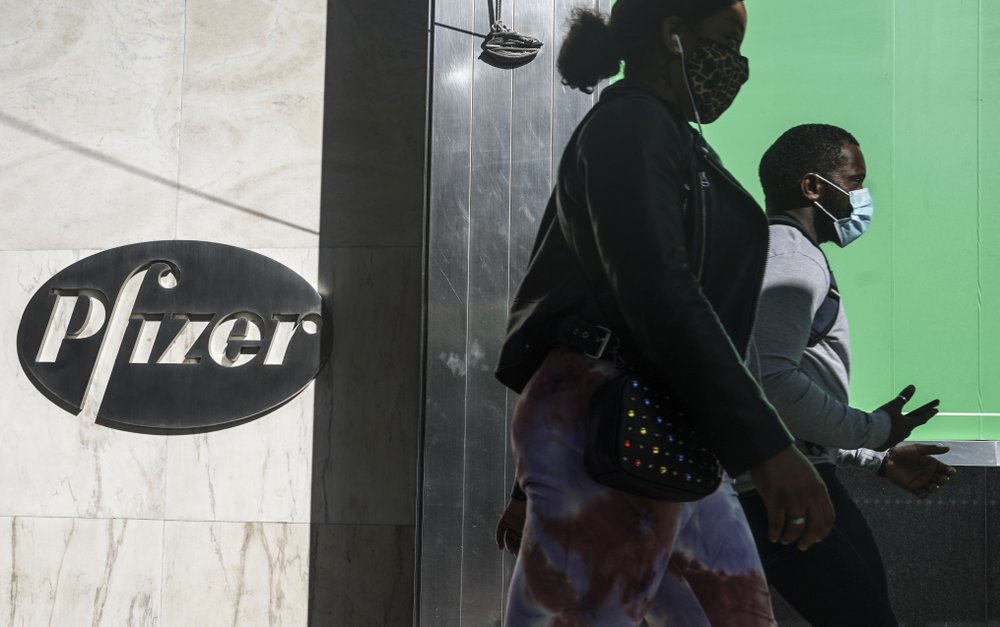Coronavirus
Minnesota’s 2nd vaccine shipment smaller than expected

MINNEAPOLIS (AP) — Minnesota health officials said Friday that the state’s second shipment of the Pfizer-BioNTech coronavirus vaccine next week will be thousands of doses fewer than initially anticipated.
Several states were notified by the federal government this week that they will be receiving a smaller second-week supply of the vaccine, which for Minnesota will now include 33,150 doses instead of the initial projection of 58,000 doses.
“Those projections, we’ve been told, can change rapidly, and that’s why we want the public to recognize that when things do change, that that’s not unexpected,” the state’s infectious disease director Kris Ehresmann said during a Friday briefing. “This is just an incredibly fast-moving situation.”
Two senior Trump administration officials told The Associated Press on Thursday that misunderstandings about vaccine supply and distribution schedule changes may have contributed to the fluctuating shipment numbers. Initial numbers were projections based on information from manufacturers. Spaced out delivery schedules of weekly shipments over several days at governors’ requests to make distribution easier may have led to confusion about the number of total doses arriving, officials said.
Federal Operation Warp Speed officials said Pfizer made available 6.4 million doses of the vaccine, and 2.9 million doses were expected to be distributed in the first week after approval. Another 2.9 million are to be held as the second dose for recipients of the first dose to ensure the vaccine’s full effectiveness, while the remaining 500,000 are reserved as contingency doses in case of any issues.
Pfizer has said the company has experienced no production issues.
Minnesota is expected to receive the remaining of its full first-week shipment of 46,800 by end of day Friday. Ehresmann said 947 healthcare workers across the state have been vaccinated as of Friday afternoon, and the state will have access to 94,900 doses of the Moderna vaccine following its approval, which is expected imminently.
Minnesota health officials on Friday reported 2,737 newly confirmed coronavirus cases and 65 deaths, bringing the state’s totals to 391,889 cases and 4,723 deaths since the pandemic began.
The seven-day rolling average of daily new cases in Minnesota dropped over the past two weeks, going from 6,331.86 new cases per day on Dec. 3 to 3,136.14 new cases per day on Dec. 17, according to The COVID Tracking Project. The number of new daily cases has also declined in recent weeks after explosive case growth late last month.ADVERTISEMENThttps://f75d58c0f1d0d59f39f8363d36698a59.safeframe.googlesyndication.com/safeframe/1-0-37/html/container.html
Meanwhile, several Minnesota restaurants and bars are defying Gov. Tim Walz executive order barring indoor service at those establishment to help mitigate community transmission of COVID-19. The businesses— some of which are being sued by Minnesota Attorney General Keith Ellison for ignoring the order— face 60-day suspensions of their liquor licenses and thousands of dollars in fines.
Minnesota Health Commissioner Jan Malcolm said while case uptick has been declining across the state, it’s premature to allow indoor service at establishments known to contribute to community spread.
“We know also that we need to see two solid weeks of this kind of decline in order to make sure that that’s really a valid decline and not an artifact of numbers being slow to come in,” Malcolm told reporters. “We may sound extremely cautious, but I think that’s because experience has taught us that it’s wise to really look at this data over a period of time and be mindful of where that tipping point appears to be.”
___
Mohamed Ibrahim is a corps member for the Associated Press/Report for America Statehouse News Initiative. Report for America is a nonprofit national service program that places journalists in local newsrooms to report on undercovered issues.







